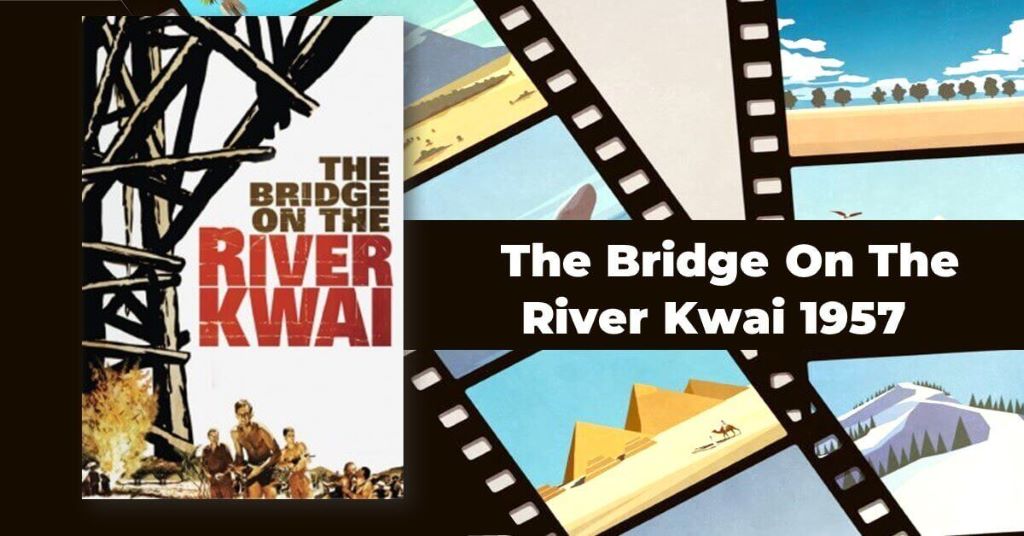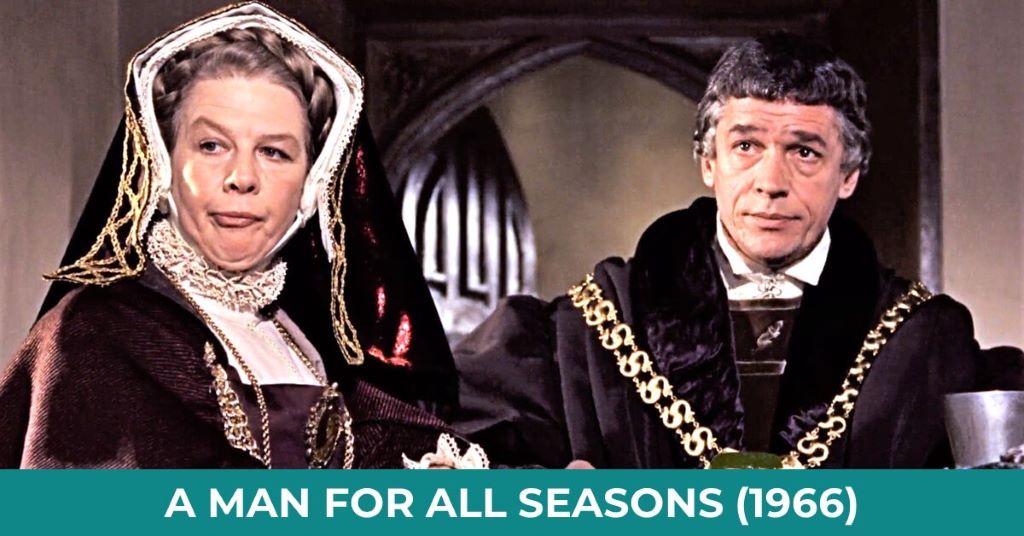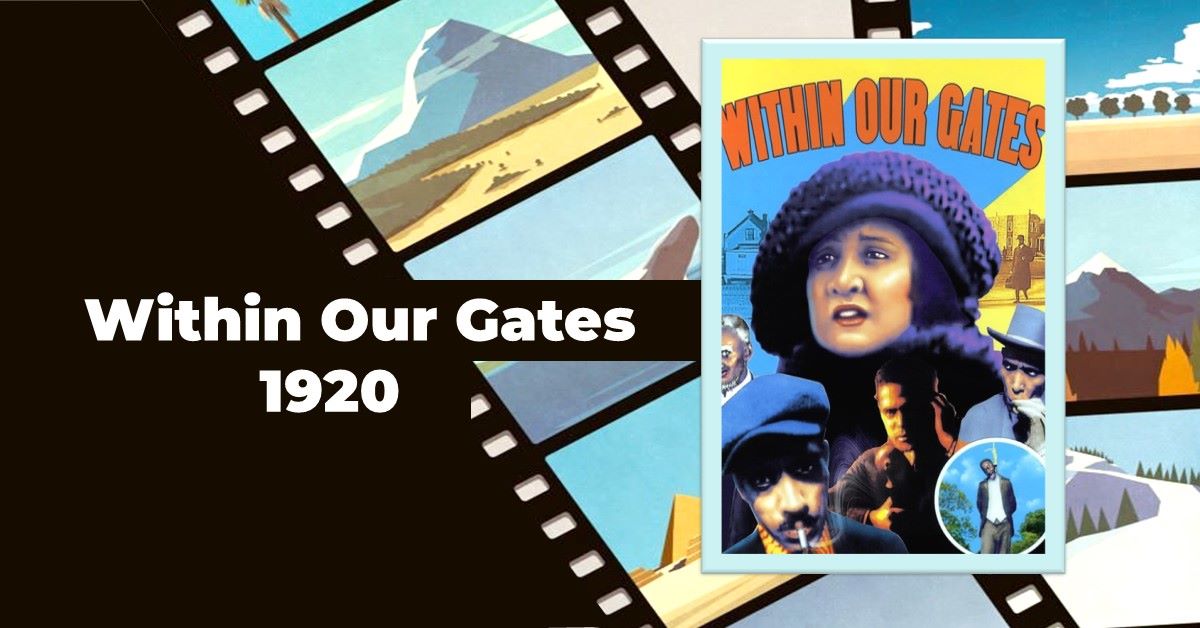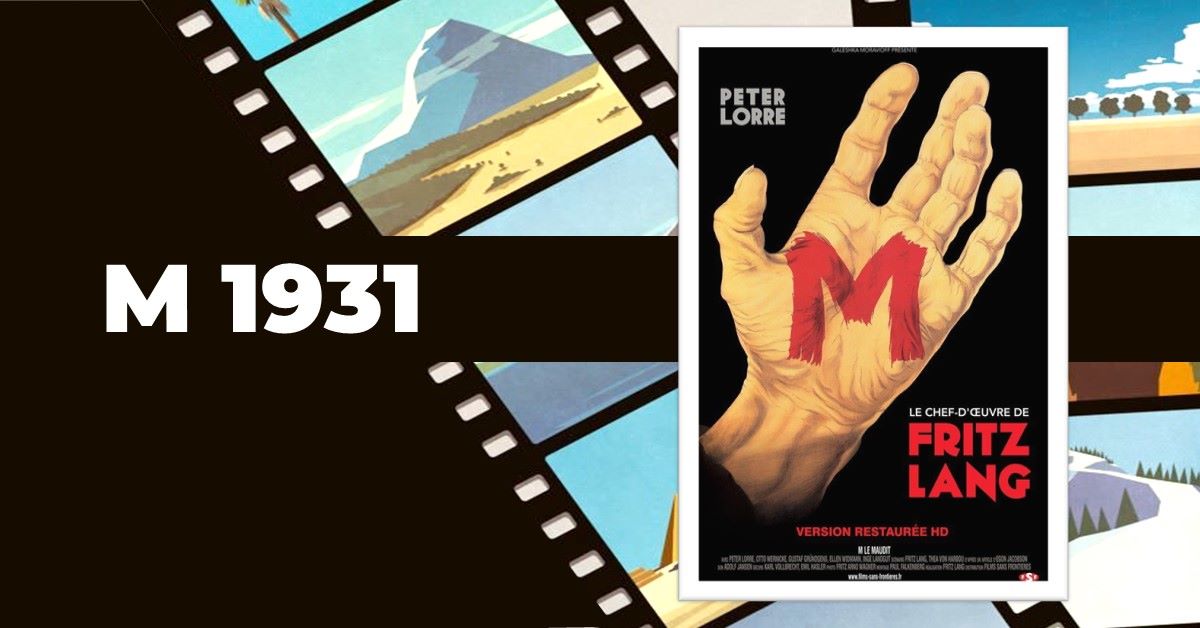Last updated on January 15th, 2024 at 11:22 am
The Bridge on the River Kwai is a 1957 British-American war film directed by David Lean and starring Alec Guinness, William Holden, and Jack Hawkins.
The film is based on the novel of the same name by Pierre Boulle and tells the story of British prisoners of war during World War II who were forced to build a railway bridge over the River Kwai in Thailand.
The film tells the story of a group of British prisoners of war during World War II who are forced to construct a railway bridge over the River Kwai in Thailand for their Japanese captors. The main character, Colonel Nicholson (played by Alec Guinness), becomes obsessed with building the bridge to perfection, despite the harsh conditions and the fact that it is being used to aid the enemy. The Bridge on the River Kwai is a powerful and thought-provoking film that explores the themes of sacrifice, loyalty, and the human spirit in the face of adversity.
It received widespread critical acclaim and won seven Academy Awards, including Best Picture and Best Director.
The story begins with a group of British soldiers, led by Colonel Nicholson (Alec Guinness), being captured by the Japanese and sent to a prisoner-of-war camp in Thailand. Nicholson, a proud and stubborn man, refuses to cooperate with the Japanese and is determined to maintain the dignity and integrity of his men.
As the prisoners are forced to work on building a bridge over the River Kwai, Nicholson becomes obsessed with completing the project to the highest standard possible. He sees the bridge as a symbol of British ingenuity and determination and is determined to show the Japanese that they cannot break the spirit of the British soldiers. The Bridge on the River Kwai was a critical and commercial success upon its release, winning seven Academy Awards, including Best Picture, Best Director, and Best Actor for Alec Guinness.
It is considered one of the greatest war films ever made and has been praised for its exploration of the psychology of war and the human condition.
The film was shot in Ceylon (now Sri Lanka) and England, with the River Kwai Bridge itself being a full-scale replica built in Ceylon. The bridge was later destroyed in a bombing raid by the Allies in real life during World War II. The film has been re-released in numerous formats over the years and has become a classic of cinema. It is one of the 101 best of 100 years on my watch list.
The climax of the film comes when Major Shears and his team successfully blow up the bridge, but Colonel Nicholson sacrifices his life in the process. The film ends with the prisoners being freed and the bridge destroyed, symbolizing the defeat of the Japanese army.
The film is a powerful and thought-provoking exploration of the human spirit and the nature of war. It won seven Academy Awards, including Best Picture and Best Director, and is considered one of the greatest films of all time.
Historical Background of Bridge on the River Kwai
Until the reseals of Bridge on The River Kwai the prisoners of the war who died in Japanese captivity during WWII remained untold. Their sacrifices remained behind the curtain. They were forgotten.
During World War II, Japan captured and interned prisoners of war (POWs) from various countries, including the United States, Great Britain, Australia, and Canada. These POWs were often subjected to harsh treatment, including forced labour and starvation, and many died while in captivity.
The treatment of POWs by Japan was a violation of the Geneva Conventions, which Japan had signed in 1929. After the war, several Japanese military and government officials were charged and convicted of war crimes related to their treatment of POWs. Many POWs were forced to work on the notorious “Death Railway” in Thailand, where they were subjected to brutal treatment and working conditions.
Many also died while being transported to Japan on ships, known as “hell ships,” where they were packed into overcrowded and unsanitary conditions.
On 7 December 1941, Japan attacked Pearl Harbour to prevent the US Navy from coming to Asia and disturbing Japan’s imperial expansion.
Shortly after the Pearl Harbour attack, Japanese troops invaded Thailand and later signed a treaty of alliance with the Thai Government led by Prime Minister Pibul Songgram.
It gave Japan the right to secure a strategic base and a safe overland route to Burma and Malaya in the south. Both Burma and Malaya became potential targets for Japanese colonies for raw materials, while Burma route to the riches of India.
And to move troops from Thailand to Burma and export raw materials from it, Japan needed a secure transport route which is why the Japanese Imperial Army proceeded with great urgency to build the 415-kilometre railway linking Bang Pond in Thailand with Thanbyuzayat in Burma. This, they had to do with the prisoners of war (POW) from the United States, Great Britain, Australia, and Canada captured in Malaya, Singapore and Java.
Professor Felix Pulm of Silpakorn University, Thailand estimates that 97,652 of the 239,711 workers deployed died during the construction and maintenance of the Thai-Burma Railway, which came to be known as the “Death Railway”, later. R. W. Braithwaite and his colleague also agree that approximately 98,000 died from those engaged with construction.
According to the film, the British prisoners of war who were supplemented due to falling behind the construction schedule were to build a bridge on the Kwai River of Thailand for the railway to pass over.
In addition, many POWs were subjected to inhumane medical experiments and torture by Japanese doctors and military personnel. Many were also executed, particularly in the Philippines and Singapore.
The legacy of the treatment of POWs by the Japanese military continues to be a source of tension between Japan and its former enemies.
Storyline
In early 1943 a group of British prisoners of war led by Lieutenant Colonel Nicholson arrived at a Japanese prison camp in Thailand.
The camp is run by a strict and ruthless commander, Colonel Saito (Sessue Hayakawa), who demands that the prisoners build a bridge over the River Kwai as part of a strategic rail line.
The US Navy Chief of Staff Shears, captive with other prisoners, described the situation of the camp as harsh where some of the prisoners died of malaria, overwork and suicide. Nicholson forbade any escape as directed by headquarters, so escape could be considered a violation of the law. Also, the dense forest makes it almost impossible to escape.
The prisoners, led by their commanding officer, Colonel Nicholson (Alec Guinness), are initially resistant to the idea of building the bridge, without having Nicolson as overseer when he refused to cooperate with Saito because he commanded that the prisoners must work under the Japanese supervision. Colonel Saito, the camp commander, told the new prisoners that they would all work, including the officers, to build a railway bridge over the River Kwai, connecting Bangkok with Rangoon.
Nicholson refused to cooperate saying that according to the Geneva Convention officers are from manual labour.
Since Saito did not abide by the law of the Geneva Convention that officers must abstain from manual labour, they decided to absolve from their duty, especially the officers until Colonel Saito accepted the officers to command and supervise the project.
He wanted his men to be commanded by them, not by the Japanese. he did not want them to feel them they are slaves but soldiers. He was clearly told that officers will not do manual labour.
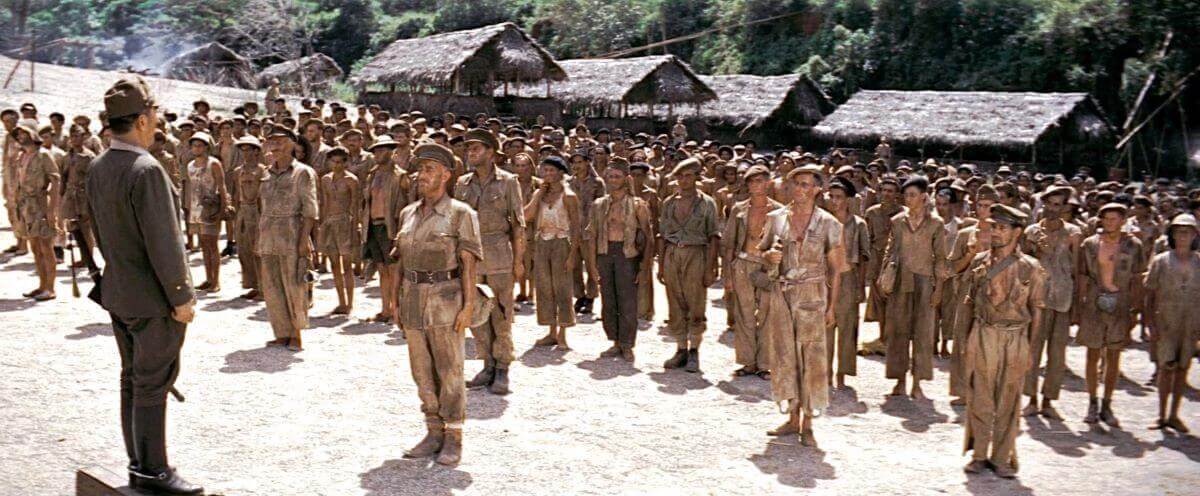
But after sending the enlisted prisoners to the bridge site, Saito threatens to shoot Nicolson if he doesn’t order his officers to work. He remains standing and unafraid knowing his death. However, the British medical syndicate Clipton ran in and asked Saito if killing the unarmed people is his soldier’s code.
But instead of killing, General Saito left all the officers standing in the scorching heat all day.
That evening the officers were sent to the punishment hut, except Nicholson who was beaten and whipped and put in an iron oven. even in the harsh treatment, he refused to bend on the law. he refused to give in in the matter of principle. he thinks that once gives in, there will be no end to it. He says, “I will not have an officer from my battalion working as a coolie.” In the meantime, Shears escaped and bad injured reached a Burmese village. After his recovery, while making his way to home on a trawler he fell ill from river water and washed away and a British sea rescue plane spotted him.
Rescued he was eventually taken to Mount Lavinia Hospital in Ceylon, the British colony.
He was then recruited by the British force called Force 316. He was told that he will have to go back to the place where the bridge was under construction, to destroy it. Eventually, he agreed to assist to that end at resistance.
The bridge project went badly due to flawed Japanese engineering plans, slow movement of prisoners, and deliberate sabotage. Saito is expected to ritually commit suicide if he does not meet the looming deadline. Desperate, he used the anniversary of Japan’s victory in the Russo-Japanese War in 1905 to release Nicholson from solitary confinement as an excuse to save face. He declared a general amnesty and a day of rest for the prisoners.
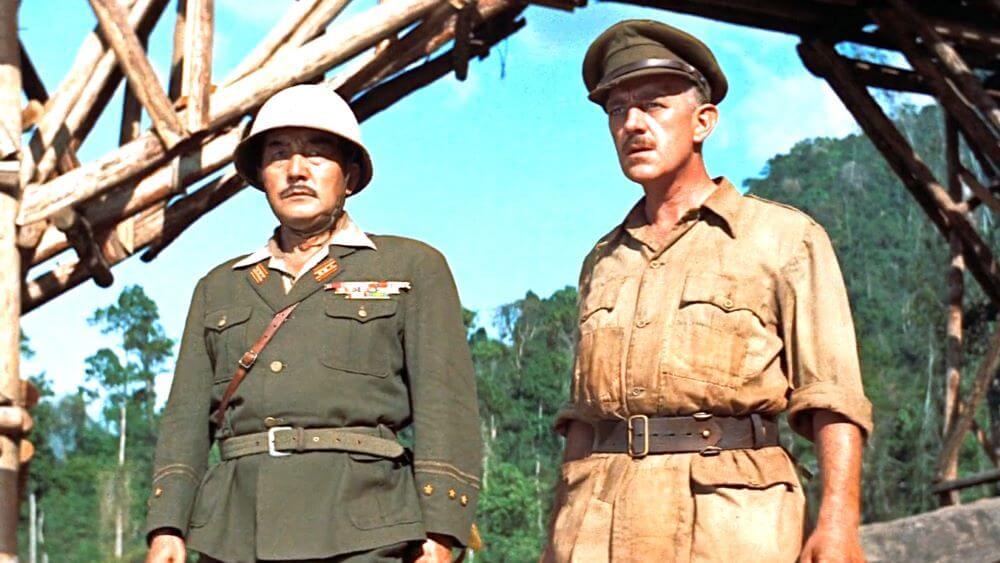
Nicholson got back his command over his soldiers and chalked out the construction of the bridge. Concerned by the poor condition and health of his men, Nicholson ordered the construction of a suitable bridge that he thought would last for centuries bearing of British military ingenuity.
Clipton objects that building the bridge would be equal to cooperation with the enemy. Nicholson became so dedicated to building the bridge that he eventually assigned his officers and injured prisoners to manual labour. he took immense pleasure in the beauty of the bridge.
Accompanied by Siamese porter girls and a village leader Shears reached the site of the bridge with Major Warden and Joyce. Secretly, Shears and Joyce planted explosives under the bridge.
By dawn, however, the wires connecting the explosives to the detonators were exposed due to the receding of the water level.
Nicholson saw the wire and brought it to Saito. On the very first day of completion, a train carrying dignitaries and important soldiers was to cross the bridge. As the train approaches, they rush down to the river bank to investigate. Joyce, grabbing the detonator, breaks the cover and stabbed Saito to death. Joyce told Nicholson that the British commandos ordered the destruction of the bridge. Warden killed Shears and to prevent their capture. “What have I done?” Nicholson exclaimed when he recognized Shears.
As the train reached the middle of the bridge, Nicholson tripped over the detonator and hit the plunger, blowing up the bridge and sending the train into the river. Warden left with Siame girls. Devasted by the catastrophe Officer Clipton muttered “Madness, Madanes” and was seen wadding through the water.
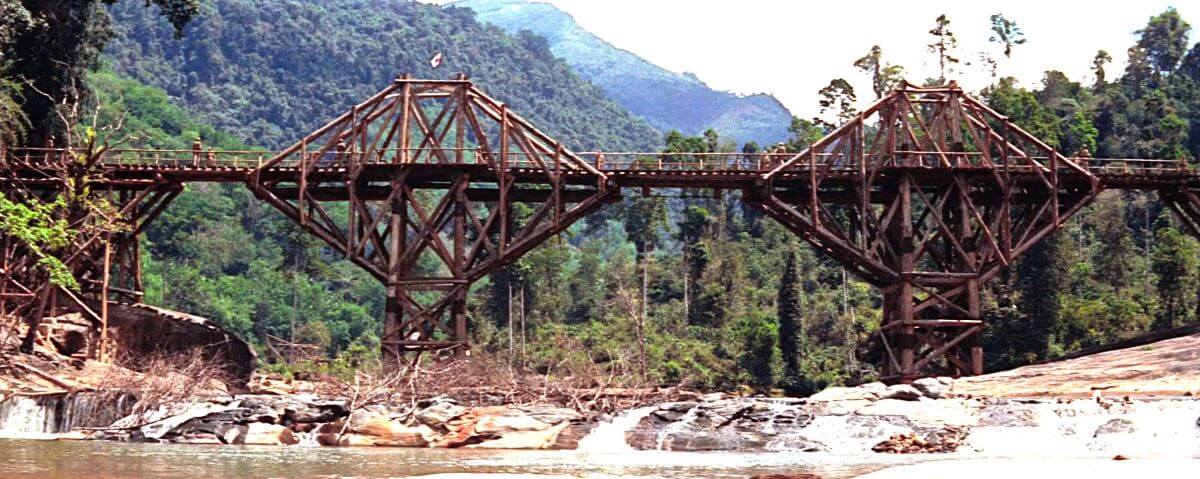
Moral
The film is a powerful commentary on the futility of war and the way in which it can corrupt and dehumanize even the most honourable of men.
Nicholson’s descent into obsession and delusion is a cautionary tale about the dangers of becoming too invested in one’s own beliefs and ideas and the consequences of refusing to see the reality of the situation. He is a proud and dedicated military man who initially resists the idea of building the bridge, but ultimately becomes obsessed with its construction and sees it as a symbol of British pride and ingenuity. This transformation is a powerful observation on the human capacity for survival and adaptation in the face of adversity.
Though his engineers considered building the bridge would be like collaborating with the enemy and treasonable activity he responded by saying that one day when the war is over and “I hope that the people who use this bridge in years to come will remember how it was built, and who built it.
Not a gang of slaves, but soldiers. British soldiers, even in captivity.” She did not want the world to show that they were incapable of a fine work.
I think this is was made the British infrastructural legacy that kept sustaining ever the after reign is over in the Indian subcontinent, especially in Bangladesh.
Not only that he wanted his soldiers to take pride in what they do, did not want them to disintegrate in illness, desperation, hunger, and torture. Moreover, he wanted to show their captive that the prisoners were not to be broken in body and spirit. Work helped them in that end.
He told his engineers to build the bridge exactly the way they would build it for themselves. He said that they wanted to show their captors the “Western efficiency”, and what the British soldiers could do.
When his principled stand was accepted by Colonel Saito, he saw that discipline was restored, their morale went high, they were well fed, and were not abused.
Instead of letting their spirit down in captivity, Nicholson helped his soldiers hold their spirits high, kept hope alive not matter what, took advantage of situations and got most of them by putting them in innovative work by changing the mindset, and of course without not giving in to the atrocities and inhuman behaviour they faced in the camps.
I am moved by his soldierly attitude which he always kept intact and held high. Though remained unfed, distant in solitary confinement in the sweltering heat, he maintained his spirit, kept his chest high and morale untainted. Finally, when he was given permission to command the building of the bridge on the Kwai River, he gave his best and eventually became obsessed with it. Whether viewers call it an ant-war or pro-war movie, Bridge on the River Kwai is considered to a love story between General Nicholson and the bridge he helped build to connect Thailand with Myanmar.
A bridge with a rail line on it.
Analysis
Bridge on the River Kwai is a film that explores the theme of the human cost of war.
The story of Colonel Nicholson and his men is a powerful commentary on the way in which war can dehumanize even the most honourable of men.
The film also raises important questions about the nature of war and the human condition.
The film also deals with themes of nationalism, imperialism, and the nature of war. The British prisoners, led by Colonel Nicholson, are initially resistant to working on the bridge, but as the work progresses, they begin to see it as a symbol of their own nation’s strength and ingenuity. Meanwhile, the Japanese officers are portrayed as ruthless and cruel, with little regard for the lives of their prisoners. One of the key themes of the film is the idea of sacrifice. Nicholson and his men are willing to make sacrifices for their country and for each other, but the film ultimately suggests that these sacrifices are ultimately futile.
The bridge that they build is ultimately destroyed and their lives are lost, highlighting the senseless waste of war.
Another key theme of the film is the idea of obsession. Nicholson becomes increasingly obsessed with building the bridge and the idea of creating something that will be a credit to his men and to the British Empire. However, this obsession ultimately leads to tragedy as he is killed in the bombing raid. The film suggests that obsession can be dangerous and can lead to a distorted view of reality.
Another aspect of the film that is worth noting is the cinematography. The film was shot on location in Sri Lanka, and the lush tropical landscape provides a stark contrast to the brutal conditions of the prison camp.
The use of natural light and the sweeping panoramic shots of the bridge construction add to the sense of grandeur and scale of the film.
Conclusion
“Bridge on the River Kwai” is a film that is both entertaining and thought-provoking, and it continues to be a classic of cinema.
The performances of Alec Guinness and the rest of the cast are outstanding, and David Lean’s direction is masterful.
The film raises important questions about the nature of war and the human condition, and it is a powerful reminder of the sacrifices that soldiers make and the cost of conflict. If you haven’t seen this film yet, it is worth your time to watch it and think about its message.
What vivid representation of war and suffering of humanity?
